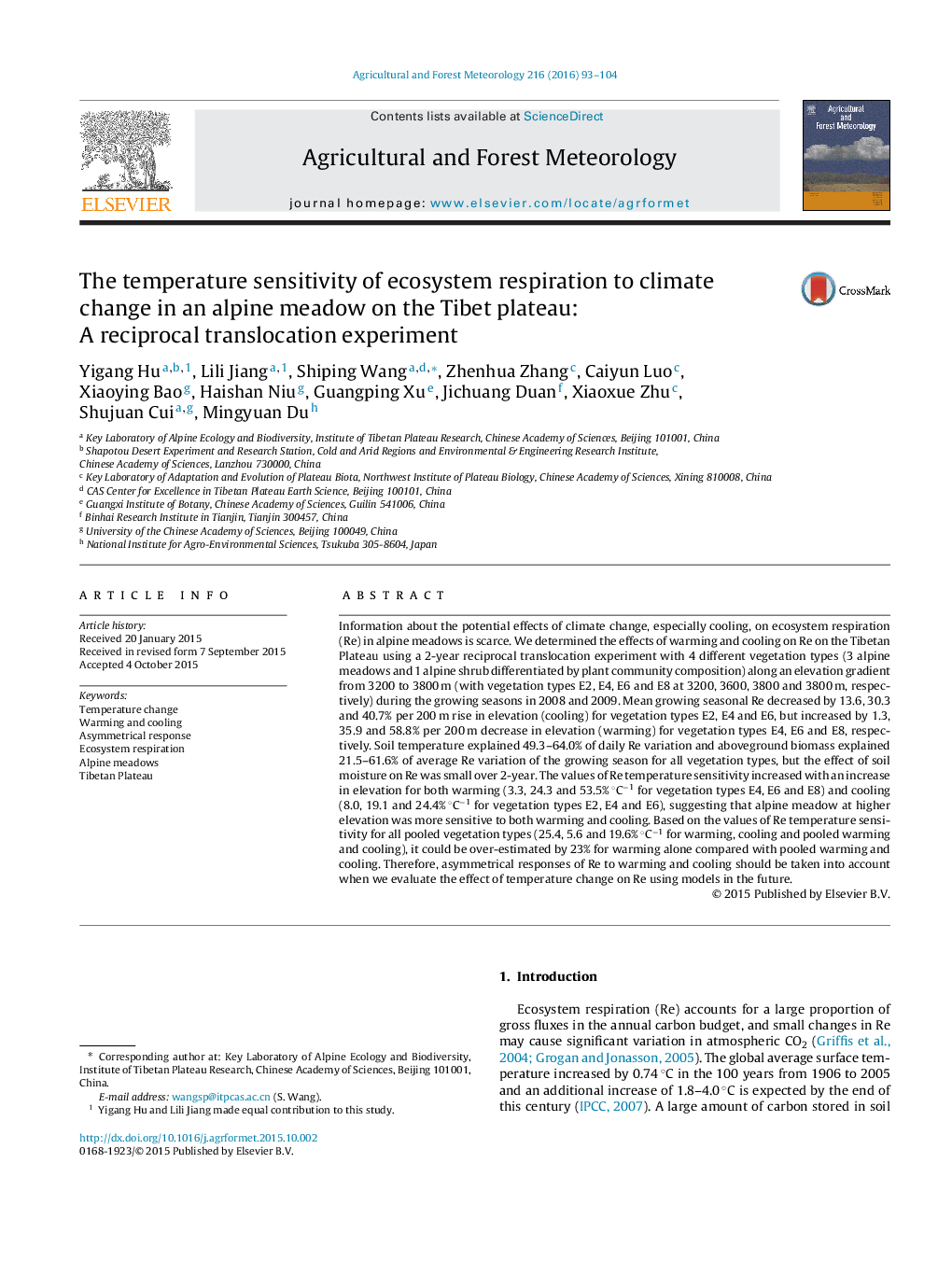| کد مقاله | کد نشریه | سال انتشار | مقاله انگلیسی | نسخه تمام متن |
|---|---|---|---|---|
| 6537108 | 158318 | 2016 | 12 صفحه PDF | دانلود رایگان |
عنوان انگلیسی مقاله ISI
The temperature sensitivity of ecosystem respiration to climate change in an alpine meadow on the Tibet plateau: A reciprocal translocation experiment
ترجمه فارسی عنوان
حساسیت درجه حرارت تنفس اکوسیستم به تغییرات آب و هوایی در چمنزارهای آلپ در فلات تبت: آزمایش تجربی متقابل
دانلود مقاله + سفارش ترجمه
دانلود مقاله ISI انگلیسی
رایگان برای ایرانیان
کلمات کلیدی
تغییر دما، گرم شدن و خنک کننده، پاسخ نامتقارن، تنفس اکوسیستم، مراتع آلپ، تبت پلاتو،
موضوعات مرتبط
مهندسی و علوم پایه
علوم زمین و سیارات
علم هواشناسی
چکیده انگلیسی
Information about the potential effects of climate change, especially cooling, on ecosystem respiration (Re) in alpine meadows is scarce. We determined the effects of warming and cooling on Re on the Tibetan Plateau using a 2-year reciprocal translocation experiment with 4 different vegetation types (3 alpine meadows and 1 alpine shrub differentiated by plant community composition) along an elevation gradient from 3200 to 3800 m (with vegetation types E2, E4, E6 and E8 at 3200, 3600, 3800 and 3800 m, respectively) during the growing seasons in 2008 and 2009. Mean growing seasonal Re decreased by 13.6, 30.3 and 40.7% per 200 m rise in elevation (cooling) for vegetation types E2, E4 and E6, but increased by 1.3, 35.9 and 58.8% per 200 m decrease in elevation (warming) for vegetation types E4, E6 and E8, respectively. Soil temperature explained 49.3-64.0% of daily Re variation and aboveground biomass explained 21.5-61.6% of average Re variation of the growing season for all vegetation types, but the effect of soil moisture on Re was small over 2-year. The values of Re temperature sensitivity increased with an increase in elevation for both warming (3.3, 24.3 and 53.5% °Câ1 for vegetation types E4, E6 and E8) and cooling (8.0, 19.1 and 24.4% °Câ1 for vegetation types E2, E4 and E6), suggesting that alpine meadow at higher elevation was more sensitive to both warming and cooling. Based on the values of Re temperature sensitivity for all pooled vegetation types (25.4, 5.6 and 19.6% °Câ1 for warming, cooling and pooled warming and cooling), it could be over-estimated by 23% for warming alone compared with pooled warming and cooling. Therefore, asymmetrical responses of Re to warming and cooling should be taken into account when we evaluate the effect of temperature change on Re using models in the future.
ناشر
Database: Elsevier - ScienceDirect (ساینس دایرکت)
Journal: Agricultural and Forest Meteorology - Volume 216, 15 January 2016, Pages 93-104
Journal: Agricultural and Forest Meteorology - Volume 216, 15 January 2016, Pages 93-104
نویسندگان
Yigang Hu, Lili Jiang, Shiping Wang, Zhenhua Zhang, Caiyun Luo, Xiaoying Bao, Haishan Niu, Guangping Xu, Jichuang Duan, Xiaoxue Zhu, Shujuan Cui, Mingyuan Du,
